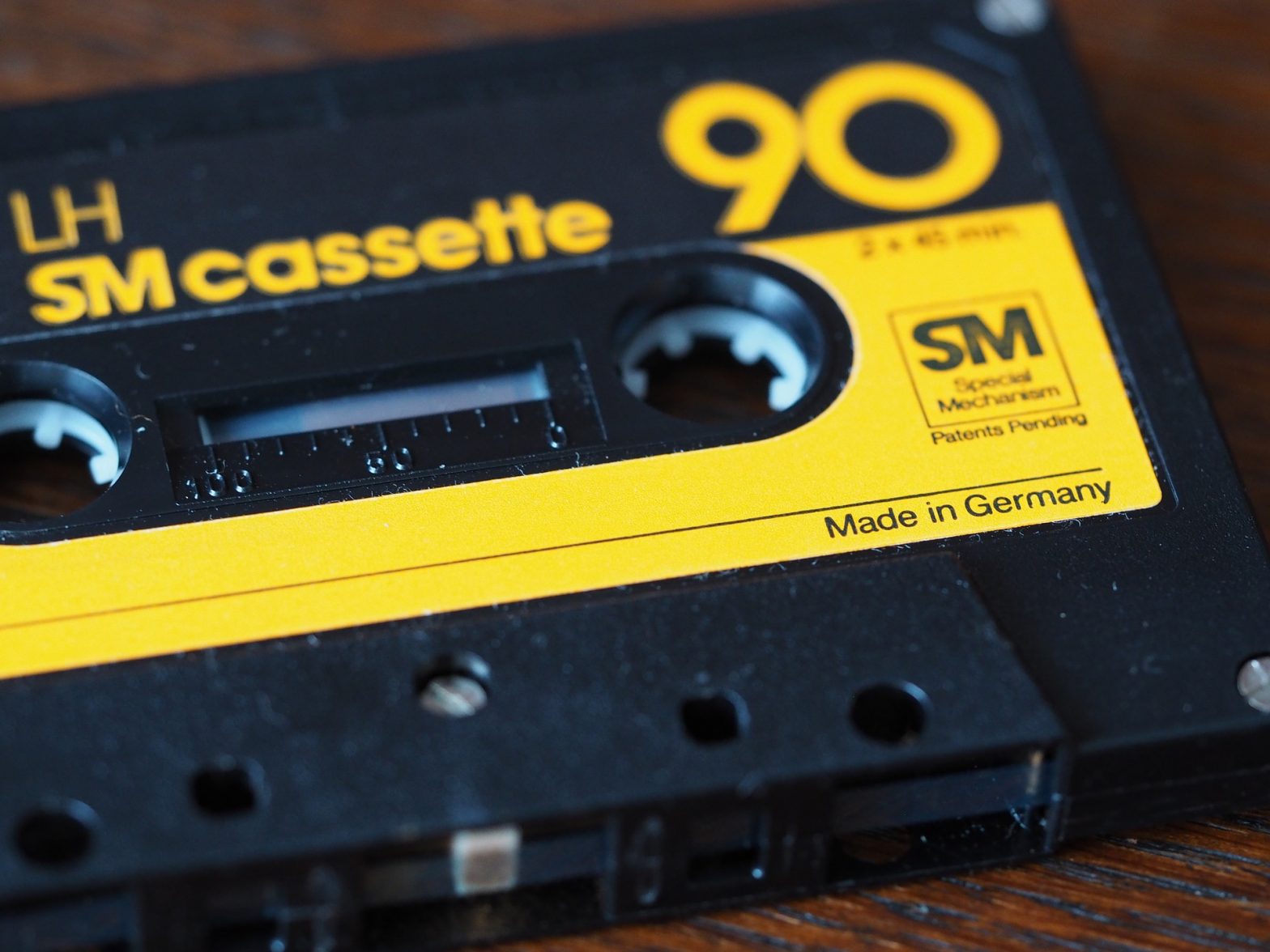
The cassette tape is a recording medium for audio that uses magnetic tape to both record and play back audio. Due to the nature of magnetic tape, tapes that have been recorded onto can be re-written, although there may be devices inside audio recorders that stop this from happening. The cassette tape was originally developed in Belgium by Philips and was released commercially in 1962. Although adoption was slow at first due to the proliferation of records and distrust of new types of audio media, particularly for individuals who had already invested large sums of money in an audio setup that they didn’t wish to expand.
Cassettes did however prove to be popular amongst younger generations who were able to make a choice between buying newer audio systems designed to play either records  or cassettes, with cassettes often winning due to their much cheaper price. Cassette tapes eventually won the majority of the audio market when, in 1979, Sony released their portable cassette player, the Sony Walkman. This was one of the earliest points in human history that music could be so easily transported, although it was common for people to take records to their friends’ homes, it was impossible to listen to music outside using any kind of portable equipment up to that point.
or cassettes, with cassettes often winning due to their much cheaper price. Cassette tapes eventually won the majority of the audio market when, in 1979, Sony released their portable cassette player, the Sony Walkman. This was one of the earliest points in human history that music could be so easily transported, although it was common for people to take records to their friends’ homes, it was impossible to listen to music outside using any kind of portable equipment up to that point.
Cassettes remained popular until the invention of the compact disc. CDs had a number of advantages over tapes that ensured their eventual victory. The digital format of CDs meant that skipping between tracks was a much easier process, taking just the press of one button, whereas cassettes had to be wound to the specific point that a track either started or ended, a laborious process.
